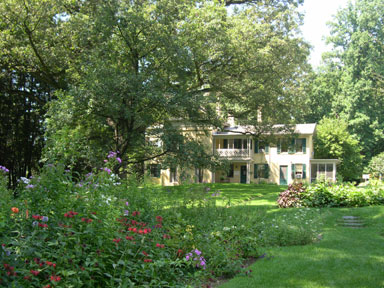
Emily Dickinson’s poetry works well in interdisciplinary studies, especially with science. An astute observer of nature, Dickinson reveals in her poetry an intimate knowledge of the natural world and an understanding of the process of scientific discovery. Her strong sense of place, too, offers an opportunity to consider how one’s environment affects a person’s outlook and approach to life as well as to art.
- Emily Dickinson saw “New Englandly.” Her phrase reflects a strong sense of place. Ask students what they think this means. Have students read the poem “The Robin’s my Criterion for Tune” (Fr256). How might Dickinson’s poem been different if she had lived in their state or region?
- Plant a garden with flowers that Emily Dickinson mentions in her poetry and letters.
- As a class, make an herbarium. Have students write a poem about one of the flowers.
- Dickinson was a weather watcher. Establish a time of day or week in the classroom when students look out the window to observe the weather (or go outside). Have students write about the weather and collect these poems into a classroom “weather poetry book.” Here are just a few poems that Dickinson wrote about different weather events: “The Wind took up the Northern Things” (Fr1152), “A Visitor in Marl” (Fr558), and “The Lightning is a yellow Fork” (Fr1140).
- Emily Dickinson observed the seasons very carefully. Have students write about their favorite season, or write poems throughout the year about the seasons.
Curriculum ideas courtesy of Marta McDowell, landscape historian.